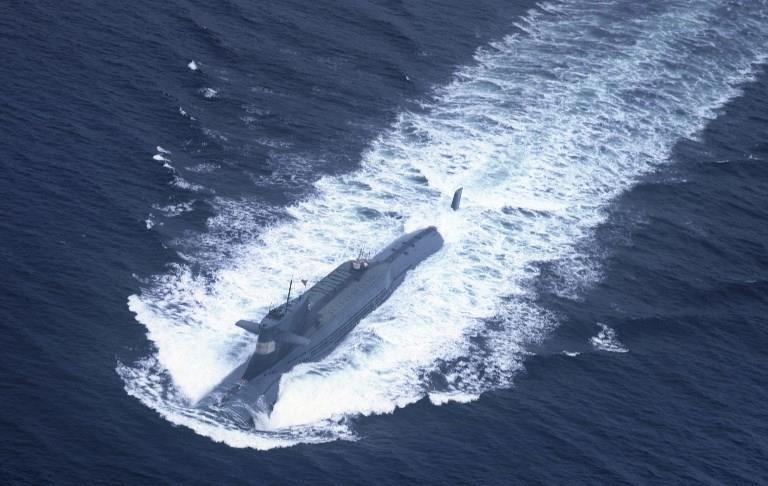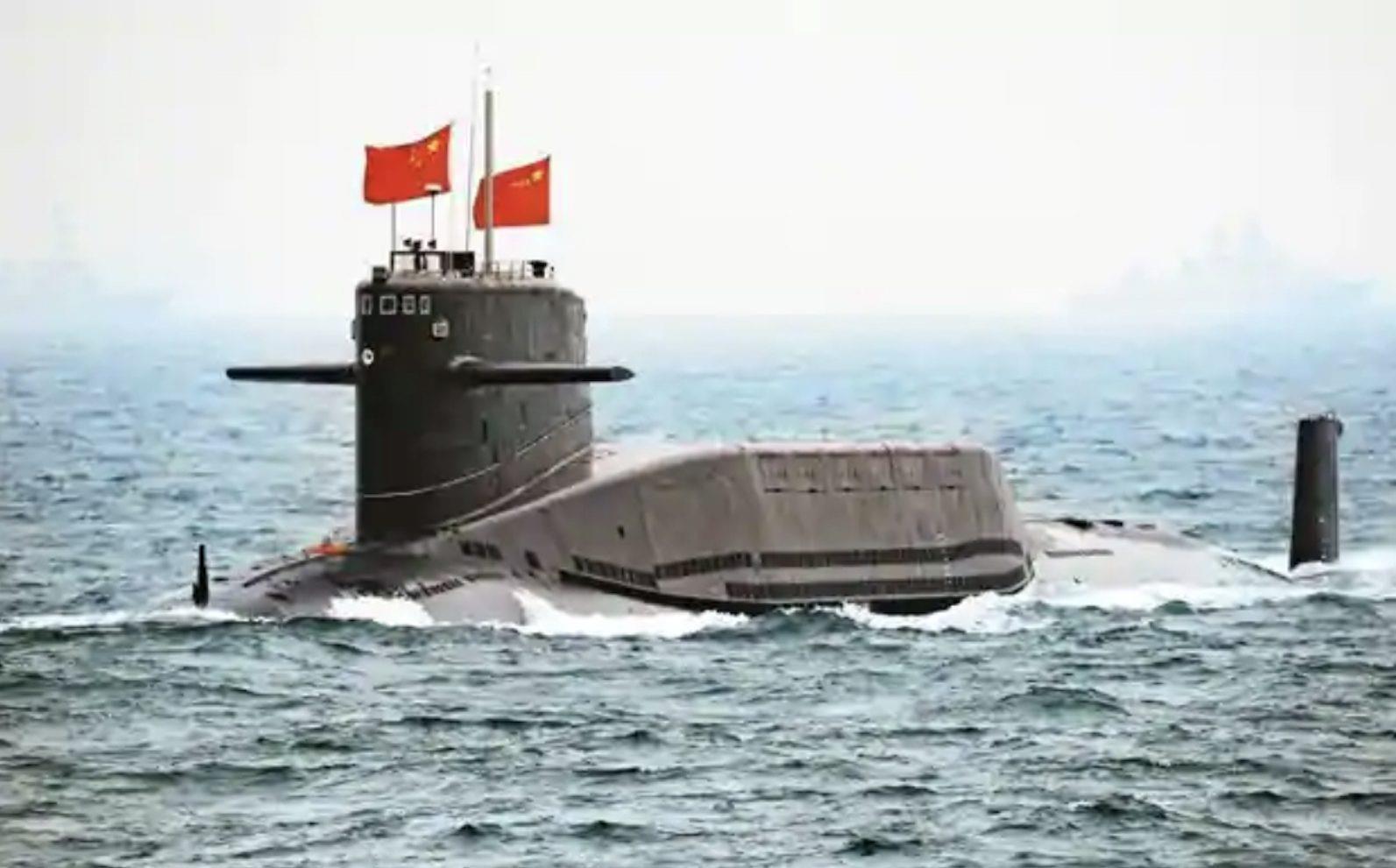(MENAFN- Asia Times)
China has deployed its latest conventional attack submarine (SSK) in military exercises off Taiwan, ostensibly in preparation for a submarine blockade against the self-governing island.
On August 11, Naval News reported that China deployed its latest SSK with its East Sea Fleet, the People's Liberation army – Navy (PLA-N) lead formation for a Taiwan Strait scenario. The report also said that the SSK is based at the protected Daxie Dao Submarine Base along with older Yuan-class boats.
This new SSK and other models would play a significant role in any future blockade of Taiwan. As previously reported in Asia Times , a naval blockade would shut down Taiwan's economy in a few weeks and likely force capitulation.
Taiwan reportedly has only an 11-day supply of natural gas and 146 days' worth of oil. A blockade would aim to starve and soften Taiwan while opening the way for a possible invasion.
Defense analyst Michael O'Hanlon notes in a 2022 news.au.com article that to minimize the risk to PLA-N ships and aircraft, China may use SSKs as the principal asset to enforce a blockade. In this scenario, O'Hanlon notes that China's SSKs would target ships going in and out of Taiwan's ports, with Taiwan being hard-pressed to counter China's submarine operations.
In addition, he notes that using SSKs to enforce a blockade would not put“loyal Chinese citizens” at risk, possibly referring to Taiwan's civilian population. Using SSKs can also mean that battle losses and mission failures would be easier to conceal, which minimizes the possibility of a domestic backlash should China decide to use military force against Taiwan.
Against a submarine blockade, O'Hanlon notes that the US and Taiwan would respond using a convoy system and anti-submarine warfare (ASW) operations east of Taiwan. In this cat-and-mouse scenario, China wins if it can sink enough ships until the US and its allies can no longer maintain safe passage to Taiwan's ports, while the US and its allies win if they can hunt and sink all of China's submarines.

A nuclear-powered submarine of the People's Liberation Army Navy's North Sea Fleet. Photo: AFP
With 80 submarines, the PLA-N Submarine Force has the largest submarine to surface vessel ratio of any navy, notes Loro Horta in the Eurasian Times . Of those, 67 are conventionally powered, while six are nuclear.
Horta also notes China's emphasis on building SSKs, pointing out that Taiwan is the PLA-N's immediate priority, and its submarines do not need the unlimited range afforded by nuclear power.
He notes that while nuclear-powered submarines (SSN) can dive deeper than SSKs, the shallow waters of the Taiwan Strait nullify this advantage. In addition, he says that SSKs can move quickly within the confines of the Taiwan Strait, removing SSNs' speed advantage.
Should China attempt an all-out blockade of Taiwan, its submarines would have to cross the Miyako Strait, which is heavily defended by Japan using formidable ASW capabilities.
In a 2020 Forbes article , defense analyst David Axe notes that Japan's entire navy is optimized for ASW warfare. For example, Japan operates 22 conventional attack submarines, whose capabilities are considered among the world's best. Adding to this large and capable submarine fleet, Japan has two Asahi-class destroyers optimized for ASW warfare.
Moreover, Japan operates a substantial number of ASW aircraft, including 70 P-3 Orion, 33 Kawasaki P-1, and a substantial number of Mitsubishi H-60 ASW helicopters which can operate from the decks of its helicopter carriers and other surface combatants.
In a Taiwan blockade scenario, Hua Dan, a China's Army Engineering Academy lecturer, notes in Forbes Japan's possible strategy to destroy China's submarine fleet.
First, Japan and allied forces would perform an“active offense” using missile and air attacks against China's submarine bases, shipyards and torpedo manufacturing facilities and mine the exits from China's ports.
Second, Japanese ships and planes would establish a“blockade zone” around Okinawa to intercept any of China's submarines that attempted to break into the Pacific.
Third, Japan and its allies would conduct“encirclement and annihilation” combat, tracking down and destroying any Chinese submarines that slip past the blockade zone. In such a campaign, Hua notes that Japanese and allied ships and planes would escort friendly shipping to defend the latter against a Chinese submarine attack.
In comparison, US ASW capabilities consisting of formidable assets such as SSNs, ASW-capable ships, maritime patrol aircraft and surveillance ships are aimed against China's nuclear ballistic missile submarines (SSBN), which may have severe implications for regional strategic stability.

US and Japanese officers on board the Japanese helicopter carrier Kaga off Shikoku region on Oct. 26, 2020. Photo: The Yomiuri Shimbun
A 2018 study by the Carnegie Endowment Center makes the distinction between US strategic and tactical ASW capabilities. Strategic ASW is aimed at hunting SSBNs, while tactical ASW is directed against SSKs and other types of submarines.
The paper notes that the US approach to strategic ASW is guided by Cold War doctrine, which entails placing Soviet SSBNs on a constant threat. However, it also emphasizes the distinguishability problem, noting that strategic ASW against China's SSBNs can harm regional strategic stability.
It also mentions that China may combine conventional and nuclear weapons on a single platform – in this case, SSBNs would blur the distinction between nuclear and conventional forces. As a result, US ASW capabilities may inadvertently threaten China's undersea nuclear arsenal, resulting in dangerous and unnecessary risks.
The paper also notes that the US may have quantitative problems in trying to track and threaten China's SSBNs. Based on Cold War practices, it notes that five SSNs may be needed to track just one SSBN.
As China's SSBNs and other submarines become stealthier, more SSNs and other ASW assets may be required to track them, with the paper mentioning that there were several occasions that the entire US Navy had to deploy to track just one Soviet submarine.
Such a situation would further strain an already overextended US submarine force, impacting their crews' readiness. It would also draw resources to building more SSNs over SSBNs, which would unfavorably impact the US' undersea nuclear deterrent.
As such, the paper notes that at the strategic level China is concerned about shielding its SSBNs from US attack, while the US is faced with whether it has enough SSNs to track China's rapidly-improving SSBNs and other submarines.
Naval News notes that the new SSK represents the cutting edge of China's conventional submarine technology.
However, it is not clear on its nomenclature noting that Western analysts refer to it as the Type-39C/D. It also notes that it was built in Wuhan, fitted out in Shanghai and commissioned just a year after launch, showcasing China's rapid naval shipbuilding prowess.
This swift process may be explained by the possibility that the Type-39C/D is an evolution, not a revolution, in China's submarine designs.
In a 2022 news.au.com article , Xie Rui, Wuchang Shipbuilding Yard Deputy Director, mentioned that the class is equipped with 60% newly researched and improved equipment and underwent system reconfiguration.
China's Type-39C/D appears to have a lot of similarities with Sweden's upcoming A-26 conventional attack submarine.
In a 2021 article , The Warzone notes the sail of China's Type-39C/D features an angled design, making it unique among China's submarines. This feature is shared with Sweden's A-26 submarines and is believed to maximize stealth by reducing radar returns.
This design may increase the Type-39C/D's chances of stealthily leaving port and traveling to its area of operations with less risk of being detected.
Although this may be the most prominent similarity between the two submarines, it may be superficial, driven by common design requirements rather than China's Type-39C/D being an outright copy of Sweden's A-26 submarine. The source notes that the revised sail design is likely related to improvements in the submarine's sonar and communications systems.
In terms of hull design, a 2021 article by Naval News notes that the A-26 features much more blended lines, with a seamless merge between the sail's leading edge and less blended lower section.
The two submarines also have different hydroplane placements, with those of the A-26 positioned along the edge of the chine. At the same time, the Type-39C/D retains the lower and more forward placement from the older Yuan class.
The source also notes that both the A-26 and Type-39C/D feature traditional cruciform instead of the newer X-rudder design, the upper section of which is believed to house a towed array sonar, a significant upgrade from the previous Yuan-class submarines.

A Chinese Yuan class submarine surfaces in the Indian Ocean. Photo: Facebook
The Warzone also mentions that the Type-39C/D features air-independent propulsion (AIP) but does not specify the technology used. Instead, it notes that the submarine could use closed-cycle Stirling engines, as with Sweden's Gotland-class submarines or lithium batteries found in Japan's Soryu-class.
The Stirling engine uses liquid oxygen and diesel to drive electric generators for propulsion or battery recharging, although it generates less power, making the submarine move slowly. In contrast, lithium batteries offer greater power density, increased endurance at high speed, quicker charging, longer battery life and reduced maintenance.
In terms of armament, Naval News reports that the Type-39C/D may deploy the same weapons as its Yuan-class predecessors, such as wire-guided torpedoes, naval mines, and anti-ship missiles. In addition, the source notes that it may launch land-attack cruise missiles from its torpedo tubes.
MENAFN16082022000159011032ID1104701099